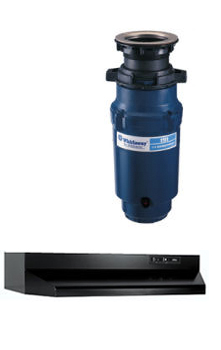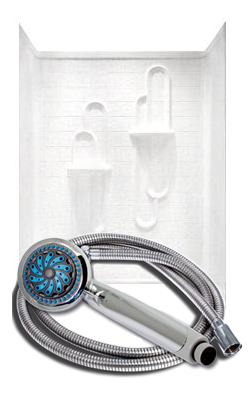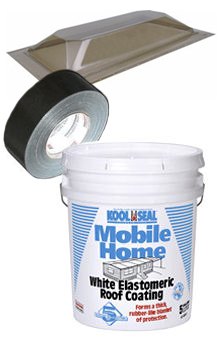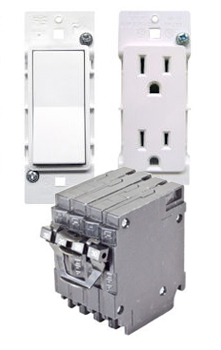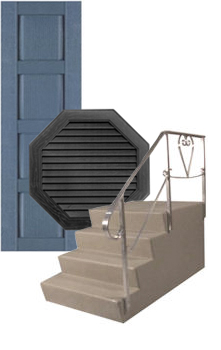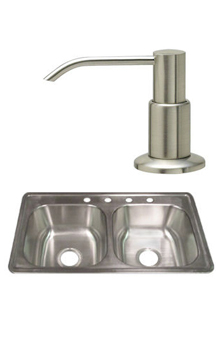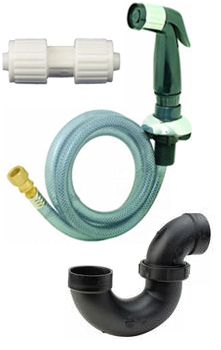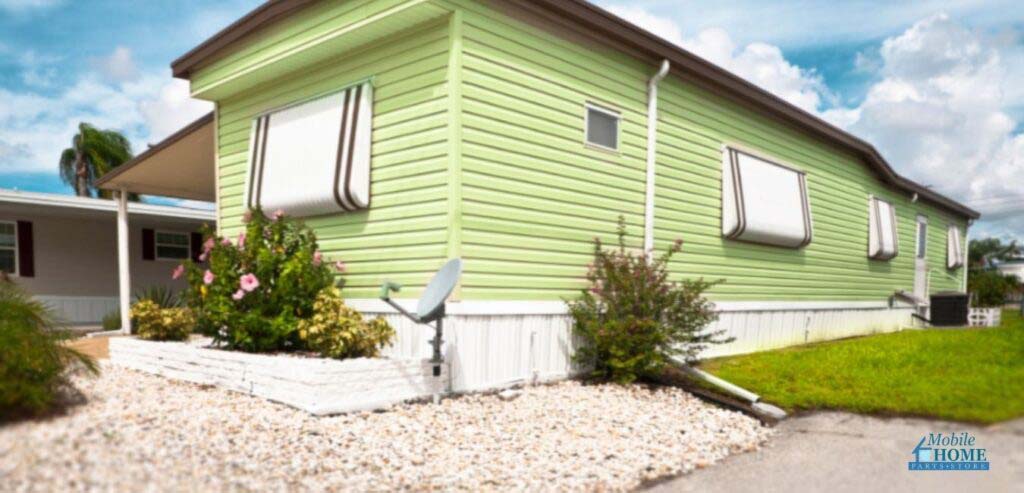
Whether you’re a long-term mobile homeowner or new to the scene, skirting is a topic you must pay attention to. It’s an essential part of a mobile home, not only for aesthetics but also for protection. But why is skirting important? What type is best for your home, and how is it installed? This article is your ultimate guide to mobile home skirting, offering all the essentials you need to make an informed decision.
What is Manufactured Home Skirting?
Mobile home skirting, or underpinning, is a material used to enclose the crawl space of a mobile home. It acts as a visual cover, extending from the bottom of the house to the ground or the foundation. But it’s far more than just a matter of curb appeal.
The Benefits of Skirting for Mobile Homes
Here’s a brief overview of the benefits of mobile home skirting:
- Provides a protective barrier against pests or critters/li>
- Shields plumbing and structural elements from weather conditions
- It helps maintain the temperatures inside the home
- It prevents moisture buildup, which can lead to harmful mold growth
- Can help lower insurance costs
- Keeps the space safe for children
- Ensures compliance with state and local mobile home code regulations
- It enhances the look of your home and allows you to personalize its appearance
What Are the Different Types of Mobile Home Skirting?
Mobile home skirting comes in several main design categories, each offering unique benefits depending on your budget, climate, and personal preference. While plain vinyl skirting is the most common choice, other options like simulated rock, stone, and brick skirting are also available.
Vinyl Skirting
Vinyl skirting is highly popular due to its budget-friendly price and attractive appearance. Made of vertically lined panels in various colors and styles, it requires four components for installation: panels, U-channel ground tracks, top J-channel, and trim. The standard panel length of 11’8″ allows for easy adjustments, especially for homes on an incline. Vinyl is also environmentally friendly and sustainable.
Mobile Home Parts Store’s Deluxe Vinyl Skirting offers both vented and unvented panels with 4.9 sq. inches of ventilation per foot. Available in five colors, it’s important to check local building codes regarding vented panels before purchasing.
Simulated Rock Skirting
Offering a high-end look without the cost of real masonry, simulated rock skirting emulates natural stones like granite and sandstone. Although more expensive than vinyl, it provides superior durability.
Reil Rock skirting is made from a single mold of ABS material, insulating the area beneath your home and standing up to harsh weather. Available in 60″ sections with heights of 32″, 36″, or 48″, it’s relatively easy to install and can accommodate uneven ground.
Simulated Stone and Brick Skirting
If you’re aiming for a more traditional look, simulated stone and brick skirting closely resemble authentic stonework. Made of injection-molded copolymer, this type withstands wind speeds up to 150 mph and extreme temperature changes. Though pricier, it offers excellent curb appeal and weather resistance.
Our Novik Skirting features contemporary designs in stacked stone, and brick styles, available in various color blends like soft desert, gray canyon, rustic mountain, classic old red, vibrant red, and brown. Anti-UV stabilizers prevent fading and discoloration. Measuring 48″ in length by 18½” in height, it’s easy to install with standard tools, providing the beauty of natural stone without the need for masonry skills.
The Quality of Mobile Home Skirting
As with any product, you want to ensure that you get something that is high quality. So, what is important to look for? There are three key factors to consider: Ventilation, durability, and weatherproofing.
Venting is Vital for Skirting
Regardless of your skirting, proper ventilation is critical to prevent moisture buildup, which can lead to mold, mildew, and structural damage. As a general rule of thumb, you must have one square foot of venting for every 150-200 square feet of floor area. While certain skirtings have premade ventilation slots, some may not, and you will need to add vents.
However, you must be careful where you place the vent in your skirting. Vents should not be located near the plumbing pipes. But should be evenly distributed around the perimeter, with one located within three feet of each corner. This allows air to circulate efficiently and prevents dead air pockets from forming in the corners of your crawl space.
Vapor Barriers
It is wise to consider installing a vapor barrier to keep moisture at bay. A vapor barrier, such as plastic sheeting, can be used on the ground under the home to reduce moisture. Before installing your mobile home skirting, extend the vapor barrier about 6″ past the perimeter of your home. You can use the ground frame or the C channel for those using vinyl to secure it to the ground. Extending your vapor barrier can also help deter weeds and grass from growing close to your home—reducing the chance of damage to your beautiful new skirting.
Durability
The next aspect of skirting you should keep in mind before your purchase is durability. Any skirting that is not dent-resistant will need to be replaced very shortly. Purchasing any skirting that is not durable will lead to annoying maintenance work and costly repairs or replacements. You must make the right decision the first time around, and this will pay dividends in the long run.
Weatherproofing
Finally, you must ensure the skirting that you are purchasing is weatherproof. Otherwise, it will fade in color relatively quickly. Since most don’t want to take the time to repaint all of the skirting on their home, it will result in a very washed-out ugly color after about a year. Weatherproof skirting for mobile homes can last many years, maintaining its original color.
Before installation or even purchase, you want to make sure that you have skirting that is going to last and look great, too.
How to Measure for Mobile Home Skirting
Before purchasing, take some time to determine how much skirting you’ll need. Skirting is usually made in large lots that can vary slightly in size. If you do not order enough skirting, this could lead to difficulty. Determining how much skirting you need will limit the variation between the skirting panels you install, making your project much more manageable.

Step 1: Measure the Perimeter
It’s time to go back to basics—add up the lengths of each side of your mobile home to find the perimeter. For example, if your home is 27 feet wide and 50 feet long, you would calculate: 27 + 27 + 50 + 50 = 154 feet. Always round up to the nearest foot.
Step 2: Calculate the Average Height
Next, measure from the ground to the bottom of your home at six points—four corners and the center of the front and back. Add these six measurements together, divide by six, and add 1 inch for the final height.
Step 3: Determine the Cost
With that measurement in mind, material costs can be calculated based on how many skirting panels you need to complete the job. Depending on the skirting, the panel length and width will vary. Check the dimensions of your skirting panels, then divide the perimeter by the panel length. For instance, a perimeter of 154 feet with 48-inch panels means you’ll need four panels.
However, if you are ordering skirting from the Mobile Home Parts Store, let us handle all the math. We offer skirting calculators on each skirting product page to help simplify your shopping experience.
Skirting Installation Tips
Installing skirting on your mobile home is an ideal DIY project. You will need basic tools like a hammer, measuring tape, tin snips, a chalk line, a level, and a snap-lock punch tool. Depending on what type and brand of skirting you have ordered for your mobile home will determine how it should be installed. Luckily, we have helpful mobile home skirting installation guides to make the process a breeze.
- Vinyl Skirting Installation Guide
- Novik Brick or Stone Skirting Installation Guide
- Reil Rock Skirting Installation Guide
Maintaining Mobile Home Skirting
Regular maintenance of your mobile home underpinning can extend its lifespan and maintain its appearance. To prolong the life of your new skirting, follow these maintenance tips:
- Regular Inspection: Regularly check for damages or loose areas, particularly after severe weather.
- Cleaning: Keep the skirting clean to prevent mold and mildew.
- Pest Control: Regularly inspect for signs of pests and take immediate action if needed.
- Ventilation Check: Ensure vents are unobstructed to maintain proper airflow.
- Repair/Replace Damaged Areas: If an area is damaged, repair or replace it promptly to prevent more extensive problems.
Mobile Home Skirting Takeaway
Skirting for mobile homes is more than just an aesthetic feature – it’s a vital component of your home that offers protection, energy efficiency, and value. With this guide in hand, you’re ready to choose and maintain the perfect skirting for your mobile home. Remember, a well-skirted home is a well-protected home. Happy skirting!
Do you have additional questions about your mobile home skirting?
Call us now! 1-888-277-7220
(Open on weekdays from 8:00 am-5:00 pm EST)
Editor’s Note: This article was updated on October 7th, 2024 to include updated details on mobile home skirting options, enhanced installation tips, and improved maintenance advice. We’ve also refined our skirting calculators for easier use. We aim to keep our guides accurate and helpful, so readers can tackle their home improvement projects with confidence!
Tags: Brick Skirting, diy, home improvement, mobile home skirting, Skirting for mobile home, Stone skirting, Vinyl Skirting


